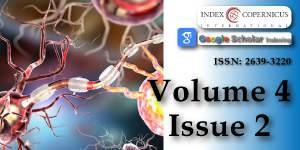Atlantoaxial subluxation in the pediatric patient: Case series and literature review
Main Article Content
Abstract
Objective: Atlantoaxial subluxation (AAS) occurs when there is misalignment of the atlantoaxial joint. Several etiologies confer increased risk of AAS in children, including neck trauma, inflammation, infection, or inherent ligamentous laxity of the cervical spine.
Methods: A single-center, retrospective case review was performed. Thirty-four patients with an ICD-10 diagnosis of S13.1 were identified. Demographics and clinical data were reviewed for etiology, imaging techniques, treatment, and clinical outcome.
Results: Out of thirty-four patients, twenty-two suffered cervical spine trauma, seven presented with Grisel’s Syndrome, four presented with ligamentous laxity, and one had an unrecognizable etiology. Most diagnoses of cervical spine subluxation and/or instability were detected on computerized tomography (CT), while radiography and magnetic resonance imaging (MRI) were largely performed for follow-up monitoring. Six patients underwent cervical spine fusion, five had halo traction, twelve wore a hard and/or soft collar without having surgery or halo traction, and eight were referred to physical therapy without other interventions.
Conclusion: Pediatric patients with atlantoaxial subluxation may benefit from limited 3D CT scans of the upper cervical spine for accurate diagnosis. Conservative treatment with hard cervical collar and immobilization after reduction may be attempted, but halo traction and halo vest immobilization may be necessary. If non-operative treatment fails, cervical spine internal reduction and fixation may be necessary to maintain normal C1-C2 alignment.
Article Details
Copyright (c) 2020 Mazzola CA, et al.

This work is licensed under a Creative Commons Attribution 4.0 International License.
Khodabandeh M, Shakiba S, Alizadeh S, Eshaghi H. Grisel's syndrome associated with tonsillitis. ID Cases. 2018; 15: e00470. PubMed: https://pubmed.ncbi.nlm.nih.gov/30656135/
Cornejo VJF, Martinez-Lage JF, Piqueras C, Gelabert A, Poza M. Inflammatory atlanto-axial subluxation (Grisel’s syndrome) in children: clinical diagnosis and management. Childs Nerv Syst. 2003; 19: 342-347. PubMed: https://pubmed.ncbi.nlm.nih.gov/12783261/
Gourin CG, Kaper B, Abdu WA, Donegan JO. Nontraumatic atlanto-axial subluxation after retropharyngeal cellulitis: Grisel's syndrome. Am J Otolaryngol. 2002; 23: 60–65. PubMed: https://pubmed.ncbi.nlm.nih.gov/11791252/
Das S, Chakraborty S, Das S. Grisel syndrome in otolaryngology: a case series with literature review. Indian J Otolaryngol Head Neck Surg. 2019; 71(Suppl 1): 66-69. PubMed: https://pubmed.ncbi.nlm.nih.gov/31741933/
Bucak A, Ulu S, Aycicek A, Kacar E, Miman MC. Grisel's Syndrome: A Rare Complication following Adenotonsillectomy. Case Rep Otolaryngol. 2014; 2014: 703021.
Karkos PD, Benton J, Leong SC, Mushi E, Sivaji N, Assimakopoulos DA. Grisel's syndrome in otolaryngology: a systematic review. Int J Pediatr Otorhinolaryngol. 2007; 71: 1823-1827. PubMed: https://pubmed.ncbi.nlm.nih.gov/17706297/
Park SH, Park SH, Lee SH. Grisel syndrome: pathophysiological evidence from magnetic resonance imaging findings. Ann Rehabil Med. 2013; 37: 713-716. PubMed: https://pubmed.ncbi.nlm.nih.gov/24236260/
Barcelos ACES, Patriots GC, Netto AU. Nontraumatic atlantoaxial rotatory subluxation grisel syndrome. Case report and literature review. Global Spine J. 2014; 4:179-186. PubMed: https://pubmed.ncbi.nlm.nih.gov/25083360/
Battiata AP, Pazos G. Grisel's syndrome: the two-hit hypothesis-a case report and literature review. Ear Nose Throat J. 2004; 83: 553–555. PubMed: https://pubmed.ncbi.nlm.nih.gov/15487635/
Brockmeyer DL. Common Pathological Conditions of the Pediatric Craniovertebral Junction and Cervical Spine. In: Brockmeyer DL, ed. Advanced Pediatric Craniocervical Surgery. New York: Thieme Medical Publishers. 2006; 43-54.
Pilge H, Prodinger PM, Bürklein D, Holzapfel NM, Lauen J. Nontraumatic subluxation of the atlanto-axial joint as rare form of acquired torticollis: diagnosis and clinical features of Grisel’s syndrome. Spine. 2011; 36; E747-751. PubMed: https://pubmed.ncbi.nlm.nih.gov/21178843/
Parke WW, Rothman RH, Brown MD. The pharyngovertebral veins: an anatomical rationale for Grisel's syndrome. J Bone Joint Surg Am. 1984; 66: 568–574. PubMed: https://pubmed.ncbi.nlm.nih.gov/6707036/
Ozalp H, Hamzaoglu V, Avci E, Karatas D, Ismi O, et al. Early diagnosis of Grisel’s syndrome in children with favorable outcome. Childs Nerv Syst. 2019; 35: 113–118. PubMed: https://pubmed.ncbi.nlm.nih.gov/30361761/
Mathern GW, Batzdorf U. Grisel’s syndrome. Cervical spine clinical, pathologic, and neurologic manifestations. Clin Orthop Relat Res. 1989; 244: 131-146. PubMed: https://pubmed.ncbi.nlm.nih.gov/2663284/
Icd10data.com. 2020. 2020 ICD-10-CM Diagnosis Code S13.1: Subluxation And Dislocation Of Cervical Vertebrae. 2020. https://www.icd10data.com/ICD10CM/Codes/S00-T88/S10-S19/S13-/S13.1
Slaar A, Fockens MM, Wang J, Maas M, Wilson DJ, et al. Triage tools for detecting cervical spine injury in pediatric trauma patients. Cochrane Database Syst Rev. 2017; 12: CD011686. PubMed: https://pubmed.ncbi.nlm.nih.gov/29215711/
National Council on Radiation Protection and Measurements. Ionizing radiation exposure of the population of the United States. Bethesda, MD: NCRP; Report No. 160; 2009.
Mettler FA, Huda W, Yoshizumi TT, Mahesh M. Effective Doses in Radiology and Diagnostic Nuclear Medicine: A Catalog. Radiology. 2008; 248: 254–263. PubMed: https://pubmed.ncbi.nlm.nih.gov/18566177/
Hale AT, Alvarado A, Bey AK, Pruthi S, Mencio GA, et al. X-ray vs. CT in identifying significant C-spine injuries in the pediatric population. Childs Nerv Syst. 2017; 33: 1977–1983. PubMed: https://pubmed.ncbi.nlm.nih.gov/28656384/
Sesia SB, Prüfer F, Walther M, Studer D. Delayed diagnosis of fractured anterior arch of the atlas in a young child. BMJ Case Rep. 2017; 2017: bcr2016214472. PubMed: https://pubmed.ncbi.nlm.nih.gov/28073868/
Zhu X, Evans KN, El-Gharbawy A, Lee JY, Brooker JE, et al. Cervical Spine Injury From Unrecognized Craniocervical Instability in Severe Pierre Robin Sequence Associated With Skeletal Dysplasia. Cleft Palate Craniofac J. 2018; 55: 773-777. PubMed: https://pubmed.ncbi.nlm.nih.gov/29489401/
Falsaperla R, Piattelli G, Marino S, Marino SD, Fontana A, et al. Grisel's syndrome caused by Mycoplasma pneumoniae infection: a case report and review of the literature. Childs Nerv Syst. 2019; 35: 523-527. PubMed: https://pubmed.ncbi.nlm.nih.gov/30209598/
Verhofste BP, Glotzbecker MP, Birch CM, O'Neill NP, Hedequist GJ. Halo-gravity traction for the treatment of pediatric cervical spine disorders. J Neurosurg Pediatr. 2019; 1-10. https://pubmed.ncbi.nlm.nih.gov/31881541/

